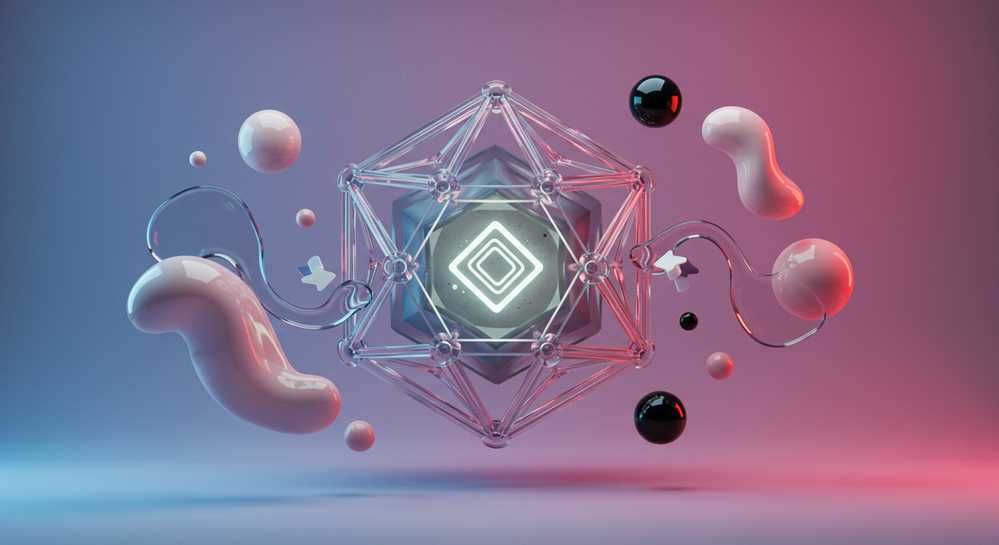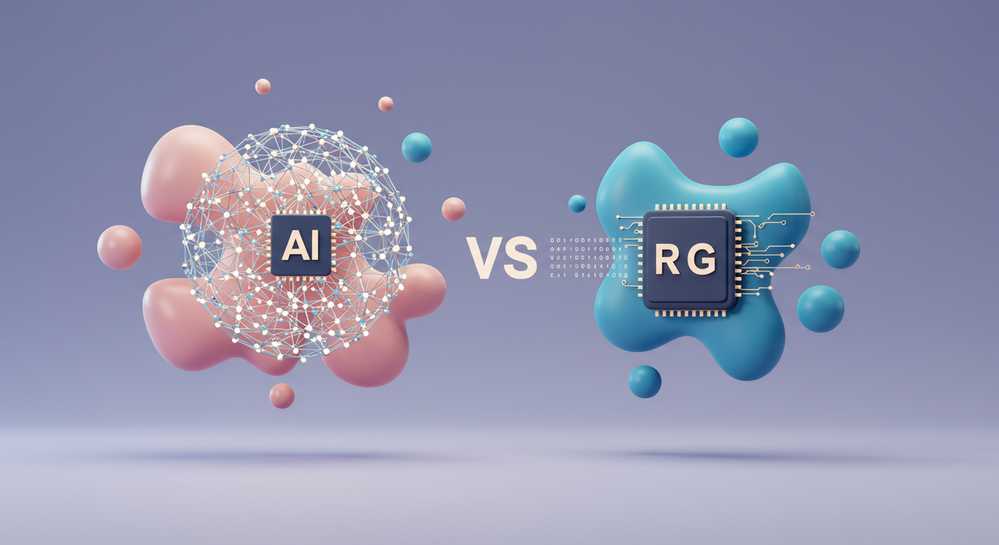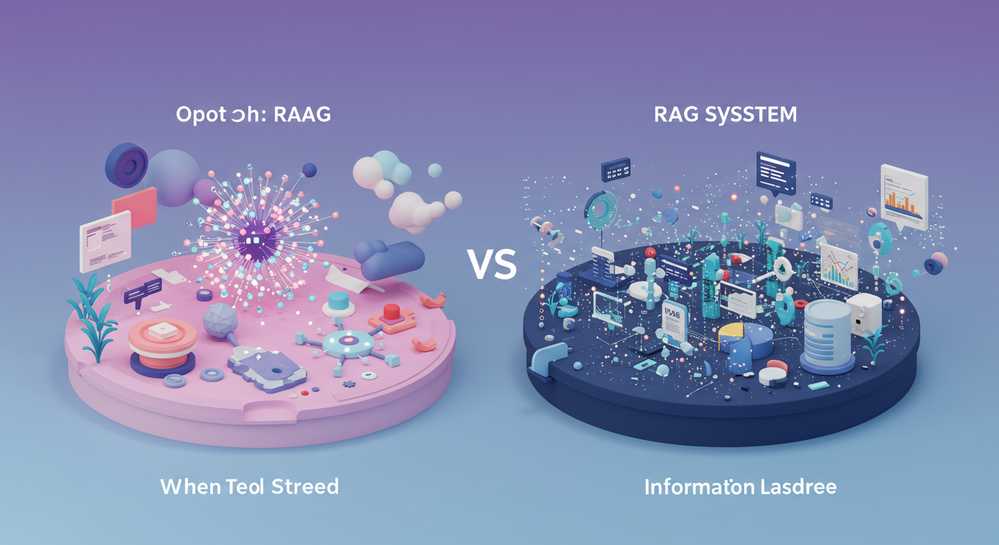The landscape of artificial intelligence is rapidly evolving, bringing forth sophisticated paradigms that promise to revolutionize how we interact with technology. Among the most discussed concepts are AI Agents and Retrieval-Augmented Generation (RAG). While both aim to enhance the capabilities of large language models (LLMs), their underlying mechanisms, objectives, and applications differ significantly. Understanding the nuances between ai agent vs rag is crucial for developers and enthusiasts looking to leverage these powerful tools effectively. This article will dissect each concept, compare their strengths, and guide you in determining the optimal solution for your specific AI challenges.
Contents
Understanding AI Agents
While AI Agents demonstrate proactive autonomy, Retrieval-Augmented Generation (RAG) serves a distinct, yet complementary, purpose. The core difference lies in their operational paradigms: AI Agents *act* to achieve goals, whereas RAG *informs* large language models (LLMs) to generate more accurate responses. Understanding this distinction is crucial for deploying effective AI solutions in 2025.
AI Agent vs RAG: Core Operational Differences
AI Agents are designed for complex, multi-step tasks requiring planning and tool use. They perceive environments, make decisions, and execute actions. Conversely, RAG enhances an LLM’s knowledge base by retrieving external, factual information before generating an output. This mitigates hallucination and provides current data, making LLM responses more reliable.
| Feature | AI Agent | RAG (Retrieval-Augmented Generation) |
|---|---|---|
| Primary Goal | Achieve specific objectives through autonomous actions. | Improve factual accuracy and relevance of LLM responses. |
| Operational Mode | Proactive, decision-making, task execution. | Reactive, information retrieval for contextual grounding. |
| Key Mechanism | Planning, reasoning, tool utilization, memory. | External knowledge base query, context injection. |
| Autonomy Level | High, capable of independent action sequences. | Low, primarily enhances an LLM’s input. |
The synergy between an AI Agent and RAG is powerful. An agent might use RAG as a tool to gather precise information before making a critical decision or executing a complex step. For instance, an AI trading bot acting as an agent could use RAG to pull the latest market data or regulatory changes, informing its trading strategy. This combination leverages the agent’s action capabilities with RAG’s factual grounding, leading to more robust and reliable AI systems.
Deciphering Retrieval-Augmented Generation (RAG)

Retrieval-Augmented Generation (RAG) is a critical innovation for large language models (LLMs). It directly addresses factual inaccuracy and outdated information. RAG empowers LLMs by providing real-time, verifiable data from external knowledge bases. This transforms LLMs into highly informed specialists.
RAG’s Core Mechanism and Benefits
The RAG process starts with a user query. The system retrieves relevant documents from an external source. This information then augments the original prompt, giving the LLM current context. This “open-book” approach significantly reduces hallucinations, ensuring truth-grounded outputs.
- Enhanced Factual Accuracy: RAG provides LLMs with up-to-date, external data, reducing incorrect information.
- Access to Proprietary Data: It enables LLMs to leverage domain-specific or internal company knowledge.
- Reduced Hallucinations: Grounding responses in retrieved evidence minimizes fabricated facts.
This method fundamentally shifts traditional LLM usage. An AI Agent focuses on autonomous action and goal achievement. RAG’s strength lies in providing precise, contextual information. This distinction is vital for AI Agent vs RAG applications. RAG ensures LLMs deliver reliable, evidence-based answers, indispensable in 2025.
AI Agent vs RAG: A Head-to-Head Comparison

While both AI Agents and Retrieval-Augmented Generation (RAG) extend AI capabilities, their fundamental approaches differ significantly. Understanding this distinction is crucial for effective AI system design in 2025. An AI Agent focuses on autonomous action and goal achievement, while RAG primarily enhances large language model (LLM) outputs with factual, external information.
AI Agent vs RAG: Key Distinctions
The core difference lies in their operational nature. AI Agents are proactive entities, capable of planning, decision-making, and executing multi-step tasks. They interact with their environment and utilize tools to reach objectives. RAG, conversely, is a reactive mechanism. It retrieves relevant data to ground an LLM’s response, preventing hallucinations and providing up-to-date context. This makes LLM outputs more reliable and accurate.
| Aspect | AI Agent | RAG (Retrieval-Augmented Generation) |
|---|---|---|
| Primary Function | Autonomous task execution, problem-solving. | Factual grounding for LLM generation. |
| Autonomy Level | High; acts independently, plans steps. | Low; retrieves data, feeds to LLM. |
| Action Capability | Performs actions, interacts with tools. | No inherent action beyond data retrieval. |
| Knowledge Use | Informs planning and execution. | Enriches generative output with context. |
Choosing between an AI Agent and RAG depends on the application. An agent excels at dynamic workflows, such as managing complex operations or automating processes. RAG is indispensable for applications requiring high factual accuracy, like customer support or research, where an LLM needs to access specific, current information. For example, a system needing to explain DeFi concepts accurately would benefit immensely from RAG.
When to Use Which: Optimal Applications

Lựa chọn giữa một AI Agent và hệ thống Retrieval-Augmented Generation (RAG) phụ thuộc hoàn toàn vào vấn đề cần giải quyết. Cả hai đều mở rộng khả năng của AI, nhưng với các mục tiêu và phương thức hoạt động khác nhau. Hiểu rõ sự khác biệt này là chìa khóa để triển khai các giải pháp AI hiệu quả trong bối cảnh công nghệ năm 2025.
Khi Nào Nên Dùng AI Agent
AI Agent là lựa chọn tối ưu cho các kịch bản đòi hỏi sự chủ động và khả năng thực hiện nhiều bước. Chúng phù hợp khi hệ thống cần tự ra quyết định, lập kế hoạch, và tương tác với các công cụ bên ngoài. Các ứng dụng như trợ lý nghiên cứu tự động hoặc công cụ quản lý quy trình làm việc phức tạp là ví dụ điển hình.
- Cần lập kế hoạch đa bước và thực thi tự động.
- Yêu cầu tương tác với các API hoặc công cụ bên ngoài.
- Hệ thống cần bộ nhớ liên tục và khả năng thích ứng.
- Mục tiêu là giải quyết vấn đề chủ động, không chỉ tạo thông tin.
Khi Nào Nên Dùng RAG
RAG phát huy hiệu quả cao nhất khi độ chính xác và tính thời sự của thông tin là tối quan trọng. Nó giúp các mô hình ngôn ngữ lớn (LLM) giảm thiểu “ảo giác” và cung cấp dữ liệu cập nhật. RAG lý tưởng cho các ứng dụng cần trả lời câu hỏi hoặc tạo nội dung dựa trên kho kiến thức cụ thể.
- Độ chính xác thông tin và việc dựa trên cơ sở dữ liệu là yếu tố then chốt.
- Cần giảm thiểu hiện tượng “ảo giác” của LLM.
- Mục tiêu chính là trả lời câu hỏi hoặc tạo nội dung từ dữ liệu độc quyền.
Điều quan trọng là AI Agent và RAG không loại trừ lẫn nhau. Một AI Agent tinh vi có thể sử dụng RAG như một công cụ để đảm bảo thông tin thu thập hoặc tạo ra là chính xác và phù hợp ngữ cảnh. Sự kết hợp này mang lại sức mạnh tổng hợp vượt trội.
Both AI Agents and RAG systems represent significant advancements in the field of artificial intelligence, each addressing distinct challenges in enhancing LLM capabilities. While AI Agents excel in autonomous task execution, planning, and tool utilization, RAG systems are unparalleled in grounding generative output with factual, retrieved information. Recognizing their unique strengths and operational models is key to deploying successful AI applications. For more insights into leveraging advanced AI technologies, explore offerings at Best Dex Sniper Bots.